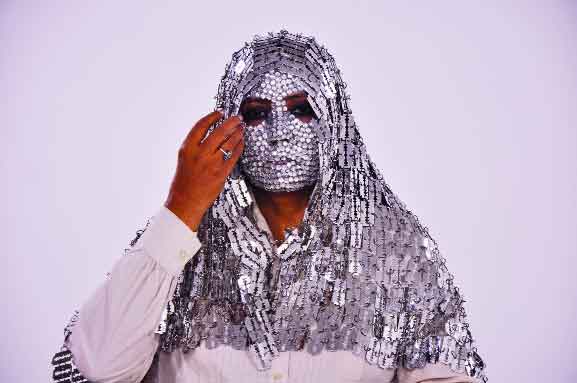Tayeba Begum Lipi’s sculptures of blades represent the pathos-filled stories of patriarchy in the world of Muslim women of northern Bangladesh, says Uma Nair
Belonging to a large family in northern, rural Bangladesh, Tayeba Begum Lipi, Bangladesh’s most avant garde artist has an early memory of secretly witnessing her sister-in-law giving birth at home. Done under the care of a midwife, who cut the umbilical cord with a razor blade sterilised in boiling water. The 11th among the 12 children in her home, she says that she could still hear the water boiling. The blade is Lipi’s metaphor. It is her message and a medium in the art of provenance.
The artist has taken over the art world with her sculptures that are created out of stainless steel blades. She says she loves places that have living memories and histories. Lipi’s exhibition just opened at the Sundaram Tagore Gallery in New York to rave reviews and a host of curious gallery-goers.
Feminine everyday objects
Best known for her use of razor blades, Lipi employs them in sculptures of feminine everyday objects: handbags, dresses, bras, bathtubs, baby strollers, shoes and even a sewing machine.
The birthing event remains emblasoned on Lipi’s mind. Reminiscent of Freud’s ‘primal scene,’ the razor blade symbolises her recognition of her own entry into the world, entanglements of love, domesticity and physical pain. Her sculptures with glimmering chains of blades, expose matrimonial paradoxes in rural Bangladesh: pathos-filled stories of patriarchy in the world of Muslim women and also bring upon us images of all that is beautiful and inviting, but speak of pain and death and danger.
Bangladeshi Muslims
Lipi’s work has been profoundly influenced by the September 11 attacks in New York in 2001 and the July 7, London bombings in 2005. Her countrymen’s responses to these events and how the world subsequently treats Bangladeshi Muslims. She recalls experiencing racial discrimination during travels in Europe prior to 2001 — where she participated in residencies, exhibitions and workshops — and it noticeably intensified afterward. As an artist, she also observed Bangladeshis at home and abroad suddenly questioning their own identity and felt compelled to announce their allegiance to their faith. “People felt that they had to stick to only one identity,” Lipi noted and added, “So, they turned to religion.”
Dissent and protest
I distinctly recall seeing the bikinis at the India Art Fair. There is a striking way in which these undergarments appear to be animated, despite the fact that no bodies inhabit them. The apparent fragility of Comfy Bikinis (2013) is belied by the realisation that the interlocking safety pins, which are used to create the piece, actually form a shield for the wearer. Upon realising that the objects we normally wear or sit on are forged from hazardous materials, Lipi’s sculptures become sites of dissent and protest.
She wields razor blades to address violence against women — and this is what sets her apart as an artist. To draw attention to the excesses of violence against women is one of Lipi’s primary goals. In doing so, she gives voice to the anonymous, often invisible, women of Bangladesh.
Fear and oppression
She crafts the likeness of commonplace items like handbags, bathtubs and strollers from the small, menacing strips of metal, mainly to address the culture of fear and oppression that defines daily lives in Bangladesh. “I did not even think about why I was choosing it. I was only looking for a sharp, violent readymade object that could express my reaction to the vulnerable political situation in both Bangladesh and Pakistan,” the artist said. “At some point, I questioned why I was attracted to this object, and then I found my answer in a childhood memory,” added she.
Perils of a society
Lipi fuses intimate subject matter with aggressive materiality, reflecting on the personal and political perils of a stifling society. “My work always expresses a paradoxical human condition that a human being experiences in a country like Bangladesh,” she explains. “Being in such a society, a woman’s experience is completely different than the experience of a man.”
She identifies a duality in her environment and translates it viscerally into the personal experiences of her work. When you glance at her sculptures, they make a statement — they are luminous yet delicate in a surreal way. They look uncanny from afar, but terribly pain-inducing from up close.
Photo: Sundaram Tagore Gallery, New York


























